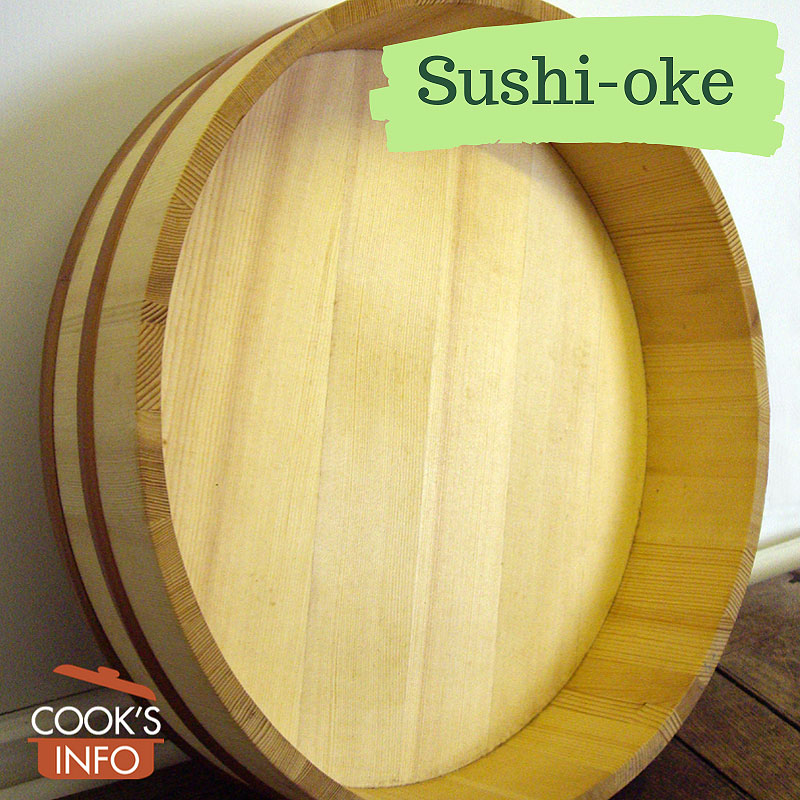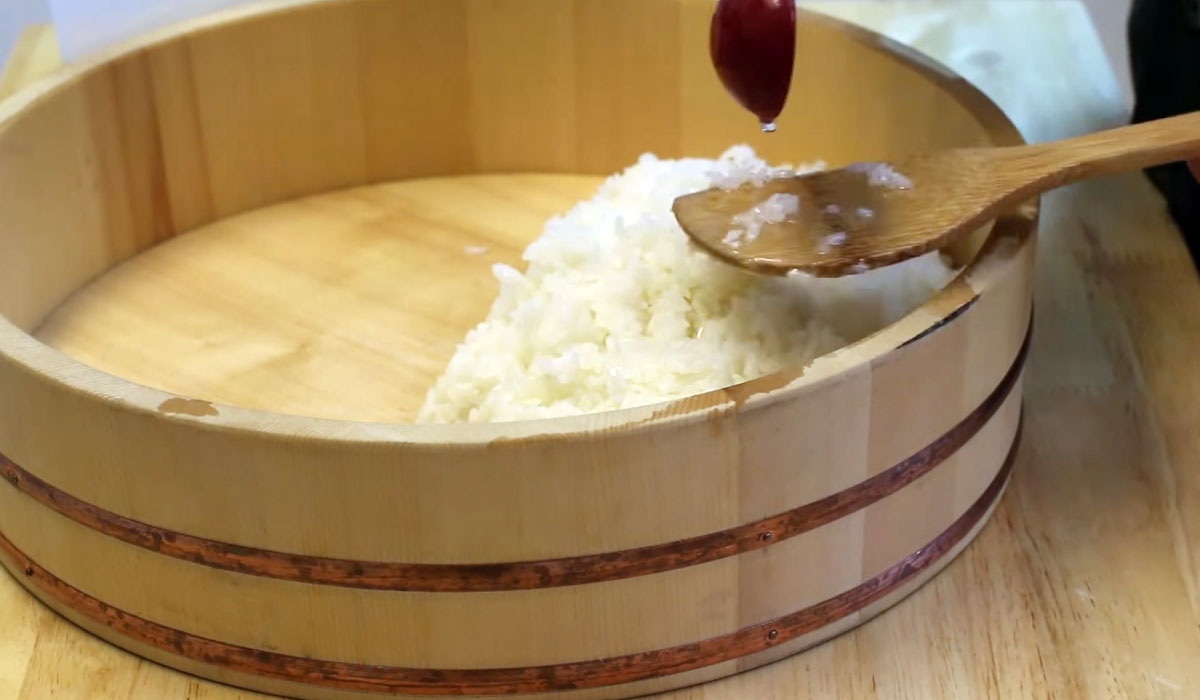
Sushi-oke. Feòrag NicBhrìde / wikimedia / CC BY-SA 3.0
A sushi-oke (aka “hangiri”) is a special low wooden “tub” or mixing bowl used for cooling and seasoning sushi rice in before the rice is used to make the sushi with.
Construction
It has straight sides, and a completely flat bottom. It actually looks like the bottom few inches off of a straight-sided barrel.
Home use sushi-oke range from 30 to 45 cm (1 to 1 ½ feet) wide, while restaurant ones may be 1 metre (3 feet) wide. Generally, they are about 10 cm (4 inches) deep.
Traditionally, sushi-oke are made of bare, unfinished cypress wood slats, bound together just as a barrel is, with hoops running around them. The hoops are usually copper.
The purpose of its being wood is to absorb excess moisture from the rice.
Usage
No seasoning or treatment is needed before using a sushi-oke for the first time. However, before each use, you wipe it first with tezu before putting rice in to help prevent the rice from sticking.
Use wooden or plastic spoons in it to prevent scratching the wood.
A few sushi-oke come with a wooden lid, to help keep the rice warm. It can also just be covered with a cloth.

Seasoning rice with vinegar in a sushi-oke. Quiethut.com / flickr / 2018 / CC BY 2.0
Cooking Tips
After using a sushi-oke, wash with warm, soapy water. Let air dry, then store in plastic bag.
Substitutes
Large platter
Nutrition
Some North American health professionals wonder how easily such a wooden implement used in preparing food for the public can be sanitized.
Others say that there is no epidemiological evidence or research studies even starting to show that sushi-oke in restaurants have ever posed a health issue. They say that if anything, the hazard might be the rice (left out too long), or the fish, or in some way the food itself, but not the sushi-oke bowl.
The environment is also acidified somewhat, in wiping the bowl with the tezu to start, and with the vinegar dressing applied to the rice.

